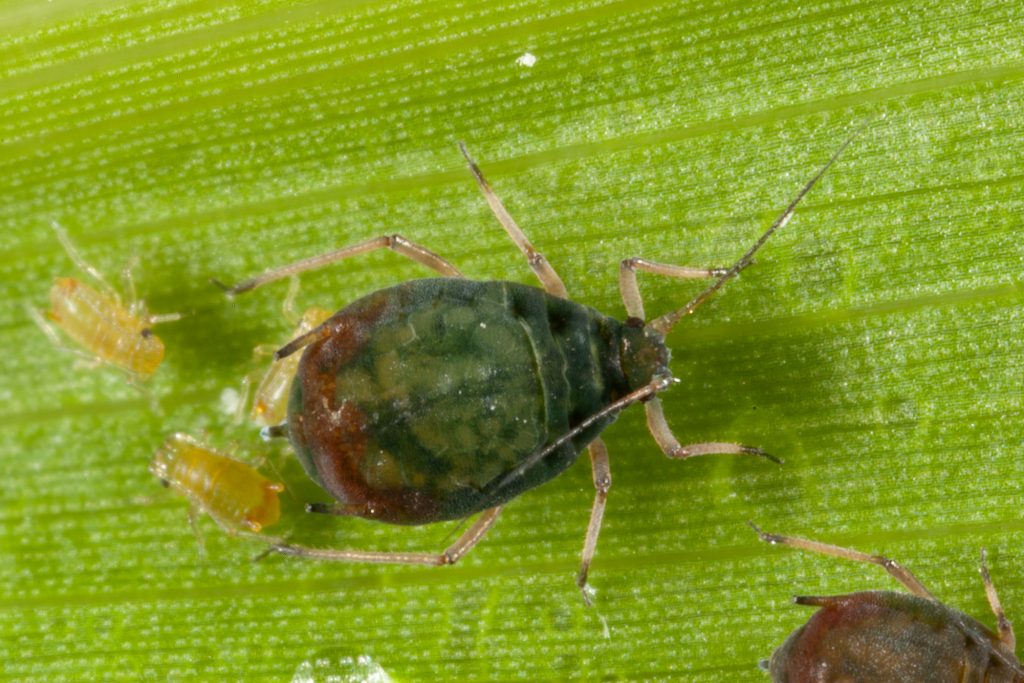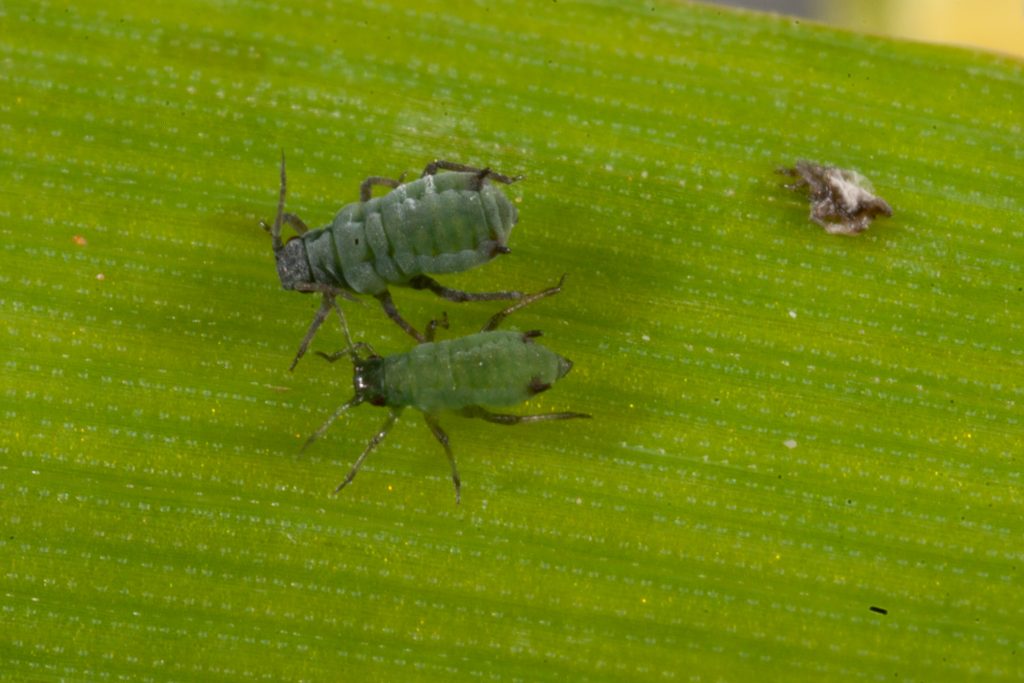Increasing temperatures and, in some regions, moisture stressed cereal crops, have led to rapid aphid build up. Some crops are at risk.
Where have they been reported?
Oat aphids (Rhopalosiphum padi), predominantly, and corn aphids (Rhopalosiphum maidis) have been colonising cereal crops, in some cases in very large numbers, within the north-eastern Wimmera and eastern Mallee districts of Victoria, as well in the Central West Slopes & Plains district of NSW.
Oat aphids have been recorded in moderate to high numbers within wheat and barley crops near and to the west of Forbes in the NSW Central West Slopes & Plains district.
In some cases more than 200 aphids per tiller were recorded, with the highest numbers occurring along fence lines within the crops.
Similarly, oat aphids have been building up in cereal crops near Ouyen in the Victorian Mallee, with pressure varying from 1-2 per plant to several hundred per plant.
Signs of parasitism (aphid mummies) in these crops are increasing and in some cases keeping aphid number in check, while other paddocks have needed to be sprayed.
Three barley crops, two in the Victorian Wimmera (one in Charlton and one near Donald), and one south-west of Swan Hill in the Victorian Mallee have required spraying for cereal aphids, with over 100 aphids per tiller in the edges of the paddocks. Again, signs of parasitism were present, though in low numbers.

About cereal aphids
For comprehensive information on cereal aphids, including their occurrence, lifecycle, behaviour and management strategies, go to oat aphid or corn aphid within the new PestNote series.


Our advice
Ideally, monitoring for aphids and their parasitoids should commence in mid winter and continue throughout spring. Aphid populations can build up rapidly with increasing temperatures, particularly when crops are stressed.
Monitor 3-5 locations in the crop and examine 5 plants at each location.
Also, watch out for aphid parasitoids and monitor their changing numbers over time; they often play an important role in suppressing spring populations.
Presence of aphid ‘mummies’ in crops is an indicator that parasitism has been occurring for sometime and that many more aphids are also likely to have been parasitised.
As a rule of thumb, pre-booting crops can tolerate up to 10 aphids on 20% or less of tillers, before economic loss arises from direct feeding. Post-booting crops can tolerate 15 aphids on 50% or less of tillers. When determining economic thresholds for aphids, consideration of the moisture availability in the crop is important. Crops that are not moisture stressed have a greater ability to compensate for aphid damage and will generally be able to tolerate far higher infestations than moisture stressed plants before a yield loss occurs.
Acknowledgements
Sources of field reports
Chris Baker – Agronomist, Ag Advantage (New South Wales Central West Slopes & Plains)
Kris Dixon – Agronomist, Landmark (Victorian Wimmera)
Alana Govender and Garry McDonald – cesar
Andrew McMahen – Agronomist, Landmark (Victorian Mallee)
Darryl Pearl – Land Management Extension Officer, DEDJTR (Victorian Mallee)
Cover image: Photo by Andrew Weeks, Cesar Australia





